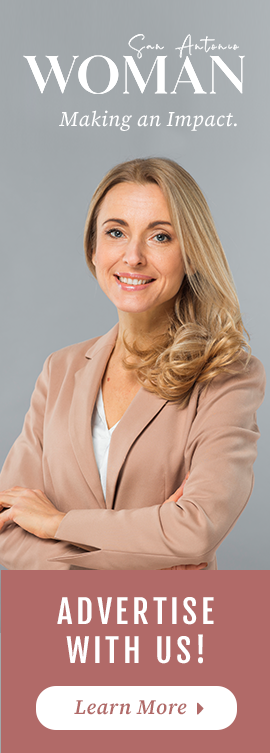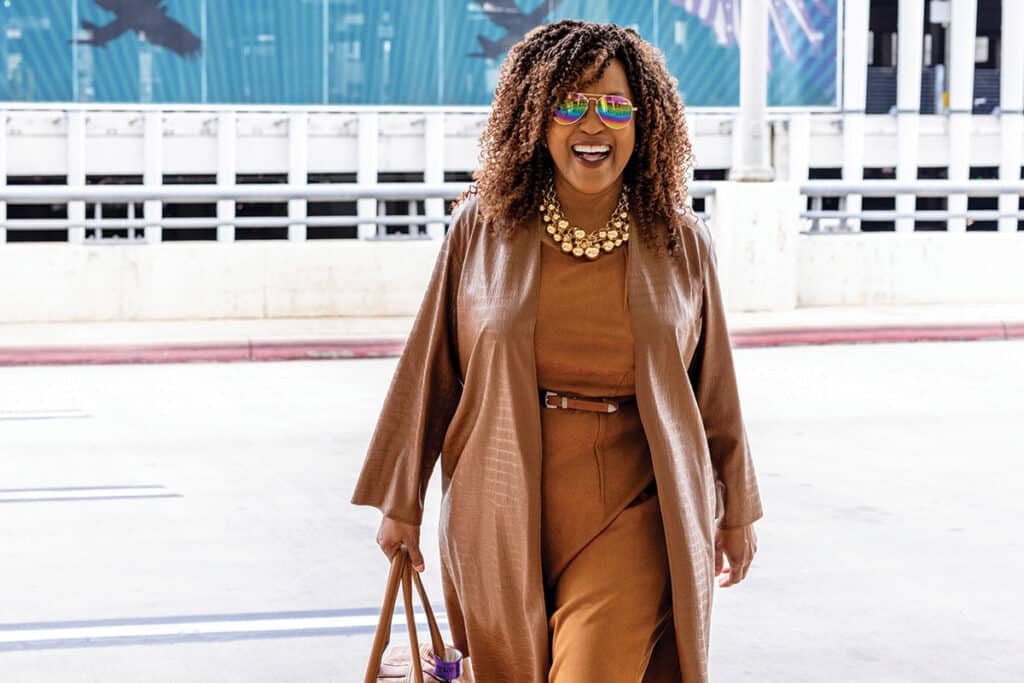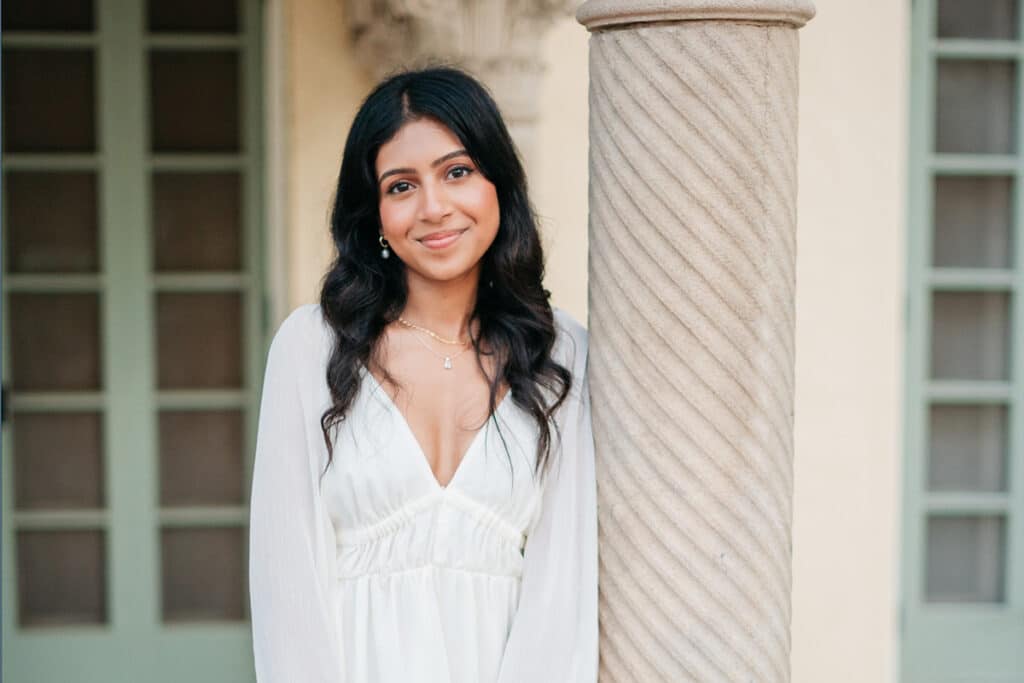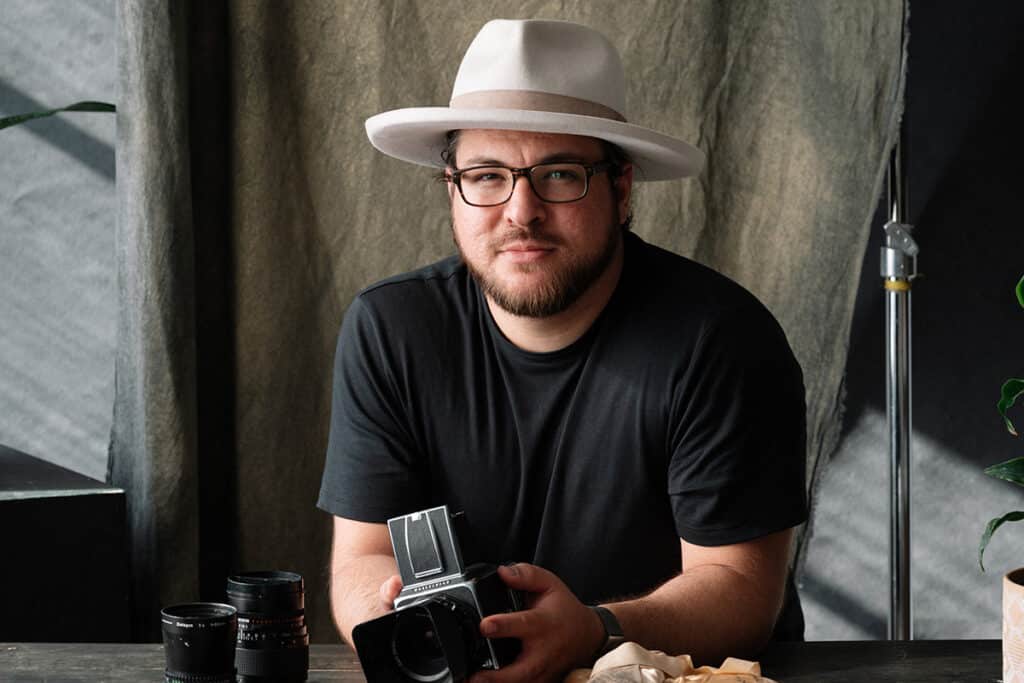Not so long ago, women had few career choices. As little girls, most women knew they would grow up to be teachers, nurses, secretaries or housewives. But thanks to the many women who have courageously transcended career barriers over the past 90 years, the gender boundaries for jobs have slowly dissolved. Some women have even pursued nontraditional occupations, encouraging us all to follow our dreams.
Such is the case of the three women profiled here. Each of these 40-something women has an unusual career that began when she followed her heart.
Restoring the past
San Antonio native Anne Zanikos is an art conservationist. She meticulously breathes new life into works of art that, for one reason or another, need repair. On any given day, you can find Zanikos and her staff working on the various restoration stages of seven to eight different projects in her lab.
Interestingly enough, Zanikos entered this field while studying to become a scientist in chemistry and biology at the University of Santa Clara in California. With a B.S. in biology and a minor in chemistry, she’d already begun working on a master’s degree in marine biology when she literally stumbled upon this new career.
During a museum studies field trip to the California Palace of the Legion of Honor, Zanikos discovered a path made specifically for her. “As soon as the museum conservator started speaking,” recalls Zanikos, “I turned to my friend and whispered, ‘That’s what I’m going to do.'” Her friend started laughing and inquired, “After all the years we’ve been studying chemistry in the lab, this is what you’ve decided to do?”
And for the past 25 years, that is exactly what she has done. In 1989, Zanikos opened her own private practice after working eight years as an apprentice for both museums and private-practice conservators.
Some of what she does can be physically taxing, such as the murals she recently restored that required her to be on scaffolding daily throughout the project. Other times she finds herself struggling with self-doubt when she ponders making the right decision about the type of treatment and materials she’s using on a piece.
Recently she worked on a panel painting that was extremely thin. It had previously been restored before it came into her hands and still needed much work. Zanikos worked at finding the best treatment to keep the piece intact. After conducting some research, she decided to apply a new technique involving balsa wood and a sawdust adhesive. Happily, she found this method to be exactly what the panel needed. The analytical problem solving involved in getting to this point is an example of what can keep her up at night.
Zanikos explains that art conservation is the preservation and restoration of works of art or historic objects. Her original goal for any piece is to preserve or restore the artist’s intention of how the object should look. Before she begins a treatment, she researchesCAthe piece’s history to find as much information as possible about it, including any facts about the materials used to create the original work. “Materials science is a very important part of our knowledge base,” she explains. “Any material we introduce into an object — be it adhesive or varnish — needs to be reversible and to age well.”
Art conservation brings Zanikos the satisfaction of solving a problem while preserving something worthwhile. “It’s the owner’s love of the painting that makes my work so rewarding. I’d rather work on a painting of little monetary value that is well loved than one that is worth more and simply passing through dealer hands,” she says. Focusing on detail and quality of work allows Zanikos and her staff to restore a highly damaged painting to what the artist first intended. In this she finds her work passion realized.
When asked about her most challenging project, Zanikos reflects on the restoration of the centuries-old statues of San Antonio’s San Fernando Cathedral. They were vandalized in 2004 by an enraged man who claimed to be God. The scope of this project included working with objects that were big, heavy and so damaged they could not stand on their own. “It was an emotional challenge, as there were a lot of expectations resting on the restorations within a specific timeline,” she recalls. Eventually, the project was successful and met the needs of both the cathedral and parish.
One thing most people don’t realize about art conservation is that it is a thoughtful field that embraces a consensus of experienced professionals. Zanikos is continually learning from other conservation scientists who have shared their techniques through journals, seminars and Internet discussion groups. “You can’t simply pick up a book and say you’re going to restore a painting,” she points out. In addition to analytical problem solving, “one must possess a lot of patience and faith.”
Zanikos finds women to be well-suited for this field, as it involves keeping a lot of balls in the air at one time while embracing the consensus of others. “You have to be willing to be in this for the long haul and struggle with the decisions you make,”she says.
Clearly this skillful conservationist enjoys running her own business and directing her career. She strongly believes that if a person is willing to work hard, be persistent and make some sacrifices, there will be great rewards in that individual’s life.
Zanikos has learned many lessons through her career. Since her training as a scientist led her to be very analytical, it took her a few years to move beyond the hard scientific facts and truly understand the power of art to move people. Her problem-solving skills allow her to contribute to the world by conserving works of art that reach down into the human soul.
Upon reflection, she says if she weren’t working as an art conservationist, she would use her love of science, investigation and patience to teach university or high school students. In lieu of educating students, she seeks balance in her life through activities with her family and church. Her husband and 12-year old daughter take first place. “It is exciting to see the young woman my daughter is growing into,” she says. As a member of her church vestry, she feels life would be quite empty without consistent spiritual nurturing.
The roar of the engine
In 1997 Texas transplant Tina Stull was a spectator at her first car race. With a degree in international business and economics from Westmont College in Santa Barbara, Calif., Stull never imagined that she would be racing a car as part of a team one day.
However, something happened at the event that changed her life forever.CAHer father had sponsored a drag racer, a situation that gave her the rare opportunity to experience three races from behind the scenes. While there, Stull observed how her father’s boss (Joe Gibbs, Redskins coach and owner of Joe Gibbs Racing) ran the racing team. She found the camaraderie to be intoxicating, especially when coupled with the mind-set that when one team member wins, they all win — and when one member loses, they all lose.
The thrill of speed and the roar of the engine put a desire in Stull’s heart to learn even more. Her next step was to find out what it was like behind the wheel. Secretly, she took a three-day course to get her racing license and experience racing a car. “After the first leg down the track, I was hooked,” she says.
In a sport where women comprise 40 percent of the spectators and 4 percent of the drivers, she decided to ease into her new adventure. In 1998 Stull found a car and got her license. Although she made it to the track only five times between 1998 and 2002, she was determined to keep her dream alive.
During this time period, local racer Ray Goodman helped her transport her car to the track and keep it tuned. “The learning curve was so big,” explains Stull. “I’d learn a little and blow up a few parts. Learn a bit more and blow up some more parts.” By 2003 she participated in 10 to 12 races and started winning rounds.
After the 2004 Indy 500, she decided to quit the sport and stop trying to finance it herself. This decision came after her teammate flipped his car during the race, and then they were caught in a powerful hurricane on the way home. Like most sports involving expensive equipment, car racing is a costly sport and hobby. The only way to consistently participate is to be independently wealthy or to get sponsors. And since Stull had neither option, she decided to hang up her helmet.
Amazingly, two days after she willingly let go of her dream, it was given back to her. Stull received a call from Interstate Batteries offering her a unique sponsorship: No matter what team she is part of or what car she drives, Interstate Batteries remains with her. Typically, when drivers change cars or teams, they lose their funding. But this is not the case with Tina Stull. She is the only female race car driver in the nation to have a sponsorship without her own car.
The main sanctioning body for racing is the National Hot Rod Association, which sets the standards for racing qualifications. To qualify for a race, a car must reach a predetermined speed in 7.9 seconds. Stull’s current race car, a dragster, is capable of doing so in 7.15 seconds. “The toughest part is qualifying for a race,” she explains. Only the 32 fastest qualifying cars get to compete.
A lot of drag racing is based on response and reaction time. It also requires strong mathematical skills to calculate throttle times and the impact of temperature, humidity and the wind speed to determine how fast a car will go. Drivers must be confident and follow their intuition by thinking quickly. When a car arrives at the end of a track, there are 40 split-second decisions to be made.
Not surprisingly, women are extremely well suited for this profession since they tend to react faster and possess stronger fine motor skills than men. These days, this fact is being acknowledged by fathers who are bringing their daughters out to race with them in increasing numbers. Stull believes that “women will be equal in racing when it is no longer mentioned that we are women.”
Over the years, she’s learned that embarrassment can’t kill: “You just need to push through the fear. That is how you make most things happen.” In fact, her motto is “Feel the fear and then do it anyway.”
Amazingly, racing is a very small part of what Stull does. The majority of her time is spent making appearances and marketing herself. For each of the 15 or so races she enters annually, she spends three to four days at the track. (The Indy 500 requires about six to seven days.) The remainder of her year is spent preparing for the races. Each week finds her working around 60 hours maintaining and debriefing sponsors and scheduling her appearances.
The business skills she relies on each day were honed through her diverse life experiences. Her degree in international business economics and marketing was earned as Stull traveled to 60 different locations throughout Europe. She experienced hands-on learning in such places as the University of Moscow and the Leningrad School of Economics while communism was still the order of the day.
The courage and ability to deal with fear head-on were gifts she found when she was told she had cancer in 2002. After visiting specialists at M.D. Anderson, Stull was given a positive diagnosis and told she did not have the dreaded disease. This experience — coupled with her then-husband’s return from the war as a quadriplegic — forever shaped her into the courageous Christian woman she is today.
As a single parent, this California native would probably go into marketing if she weren’t racing. When asked what motivates the choices she makes, Stull says, “My 12-year old daughter.” And when she’s not racing, one can find both of them working side-by-side on their house and ranch in Boerne.
Stull feels God uses her race car driving to open doors for her to accomplish work that truly matters. For example, at a race several weekends ago, she used her Boerne Volunteer Fire Department training to help a little girl who’d fallen and had to be airlifted to a hospital because of a spinal injury. In a recent visit to Brooke Army Medical Center she encouraged soldiers and their families by telling them about her racing. “I thanked them for the work they’ve done for our country. I told them that what I do is entertainment, but what they contribute changes the world,” she says.
What piece of advice does she have for women who aspire to become drag racers? “Take one step at a time,” says Stull. “Think big, but always be focused on that next little step. It is never too late to completely change the direction of your life and do something you are passionate about.”
Helping others heal
The trauma of an accident can be life-changing. Such is the case for each patient visiting Jean Thompson, whose work helps those who have lost an eye to heal emotionally. Thompson, an ocularist, creates artificial eye prostheses.
This San Antonio native began her career by following in the footsteps of her mother, who started a local ocular prosthetic practice in 1975. Thompson started working as an apprentice in 1994 when her mother requested additional help. Little did she know that her mother would pass away three years later, and that she would inherit the entire practice.
As a little girl, Thompson dreamed of becoming a dental hygienist. This dream was helped along by observing her father, who owned a business supplying materials to dentists and hygienists. After attending dental hygiene school at Lamar University in Beaumont, she worked as a hygienist for 10 years. She then spent another seven years as a sales representative working for her father.
She became certified as a B.A.D.O (Board Approved Diplomate Ocularist) upon completion of her five-year apprenticeship through the American Society of Ocularists. Thompson earned her B.C.O. (Board Certified Ocularist) certification after passing a thorough written and practical exam through the National Examining Board of Ocularists.
As Thompson describes it, her life naturally led to this career. Artificial eyes, mistakenly known as glass eyes, evolved from dental labs in the early 1940s. During World War II, glass as a commodity was hard to come by, as most of it was imported from Germany. A plastic used by dental labs, found to be more durable than glass, was eventually used to produce plastic artificial eyes.
Understanding the chemistry of plastics and color theory is just one of the many components of Thompson’s job.CAThe plastic used to produce an artificial eye — which is not round but shaped like a giant contact lens — is similar to the plastic used to make women’s artificial nails. The difference is that artificial eyes are created from a heat-cured plastic, while artificial nails are cold cured. Believe it or not, this FDA-regulated product is classified as “durable medical equipment” and requires a prescription.
When making an eye, Thompson needs to know the type of procedures a patient has undergone prior to visiting her. That’s because the type of trauma and eye surgery a person has experienced ultimately affects the shape and design of the prosthesis. There are two kinds of eye removal surgeries: evisceration, involving the removal of an eye’s contents, and enucleation, involving the removal of the eyeball. After surgery a patient’s eye muscles are usually left intact and attached to a round prosthetic ball. The artificial eye she customizes is placed over this ball.
To build an artificial eye, Thompson first makes an impression of the affected area in a fashion similar to teeth molds done by a dentist. Next, the impression is used as a guide to create the finished product. Using oil paints, she duplicates the iris of the patient’s existing eye and mimics the veins and sclera (the white part of the eye). This stage is accomplished with the patient sitting in front of her. Two hours after she finishes painting the eye, the patient returns to learn how to put it in, take it out and properly care for it.
When asked what she likes most about her job, Thompson says she loves working with patients and helping them to get back to some normalcy. Referring to her former career, she reflects, “If I didn’t get paid for this, I’d still do it. No one ever hugged me for cleaning their teeth.”
She relies on her heart when dealing with every client. This especially comes into play when working with children, who can be very difficult. In all cases, she has to work patiently with each individual to get through the tough spots at the beginning of a fitting. Her reward comes when they can look in the mirror and see themselves as normal.
Some of the most challenging times have come when Thompson had to rebuild an eye for someone who has successfully worn a prosthetic eye for years. Because plastic eyes last only five years, patients have to revisit her periodically for new models. Generally, without realizing it, the patient will relive the original trauma from years ago.
Heartfelt empathy and compassion are skills that are consistently drawn upon in this profession. A typical day will find Thompson sharing those traits with approximately six patients. Research has shown these characteristics are more commonly found in women, although they are not confined to one gender.
A workaholic by nature, Thompson can usually be found playing with her nieces and nephews or involved in church projects when she’s not working at the lab. From time to time she also dabbles in ceramic arts and crafts with her girlfriends. As a single person, she tends to sacrifice her personal life to meet patient needs by working long hours and on weekends. She also spends a great deal of time trying to find funding for patients who don’t have health insurance yet need a prosthetic eye.
Thompson’s advice for women is to “take a challenge. Whatever knowledge you have right now can be used in the future in any career path you pursue.” When her mom started in the business, there were fewer women than there are now, but that didn’t discourage her. In the United States today, the field of artificiaeye prosthetics includes about 45 percent women.
Author: Joy Capps Powell
Photographer: Liz Garza Williams




